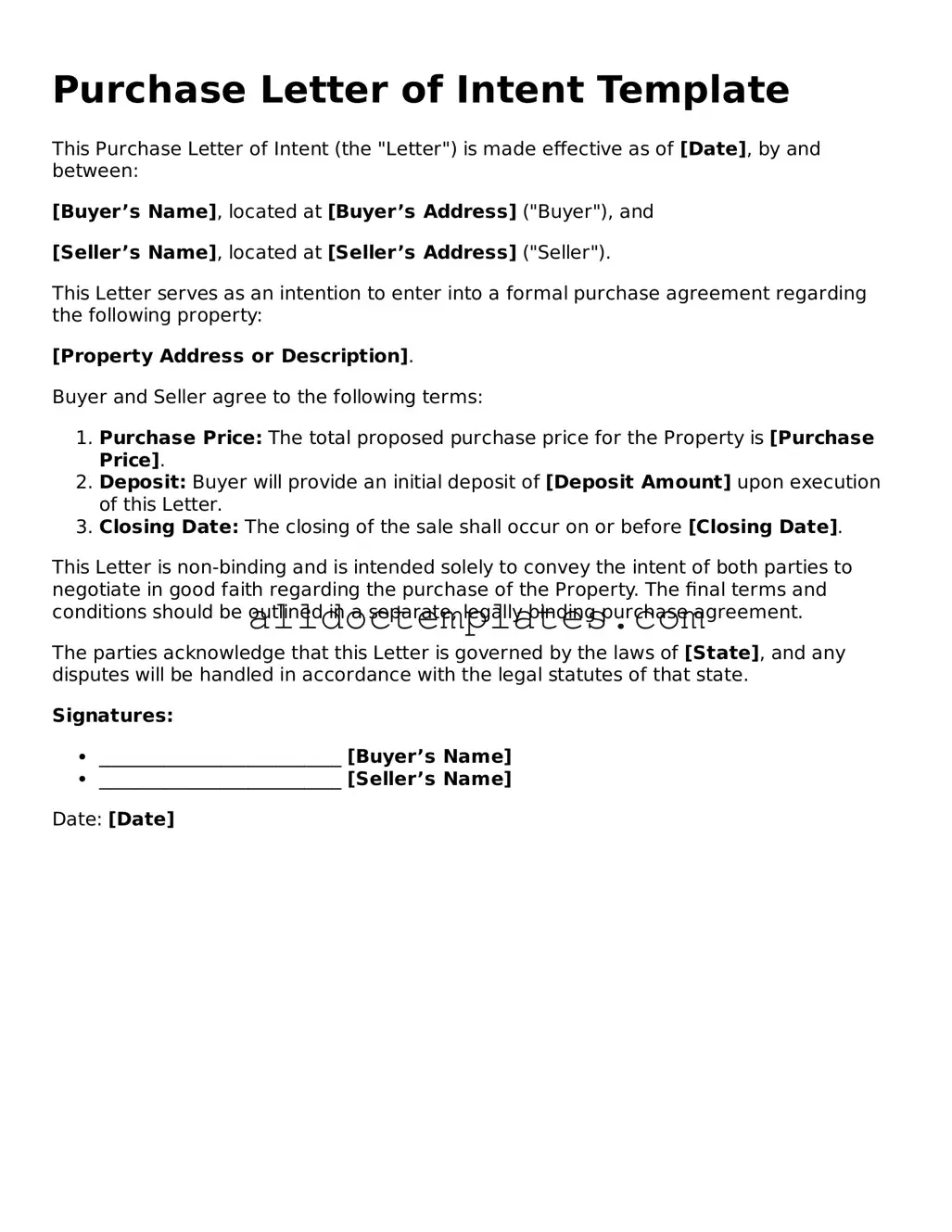Purchase Letter of Intent Template
This Purchase Letter of Intent (the "Letter") is made effective as of [Date], by and between:
[Buyer’s Name], located at [Buyer’s Address] ("Buyer"), and
[Seller’s Name], located at [Seller’s Address] ("Seller").
This Letter serves as an intention to enter into a formal purchase agreement regarding the following property:
[Property Address or Description].
Buyer and Seller agree to the following terms:
- Purchase Price: The total proposed purchase price for the Property is [Purchase Price].
- Deposit: Buyer will provide an initial deposit of [Deposit Amount] upon execution of this Letter.
- Closing Date: The closing of the sale shall occur on or before [Closing Date].
This Letter is non-binding and is intended solely to convey the intent of both parties to negotiate in good faith regarding the purchase of the Property. The final terms and conditions should be outlined in a separate, legally binding purchase agreement.
The parties acknowledge that this Letter is governed by the laws of [State], and any disputes will be handled in accordance with the legal statutes of that state.
Signatures:
- __________________________ [Buyer’s Name]
- __________________________ [Seller’s Name]
Date: [Date]
